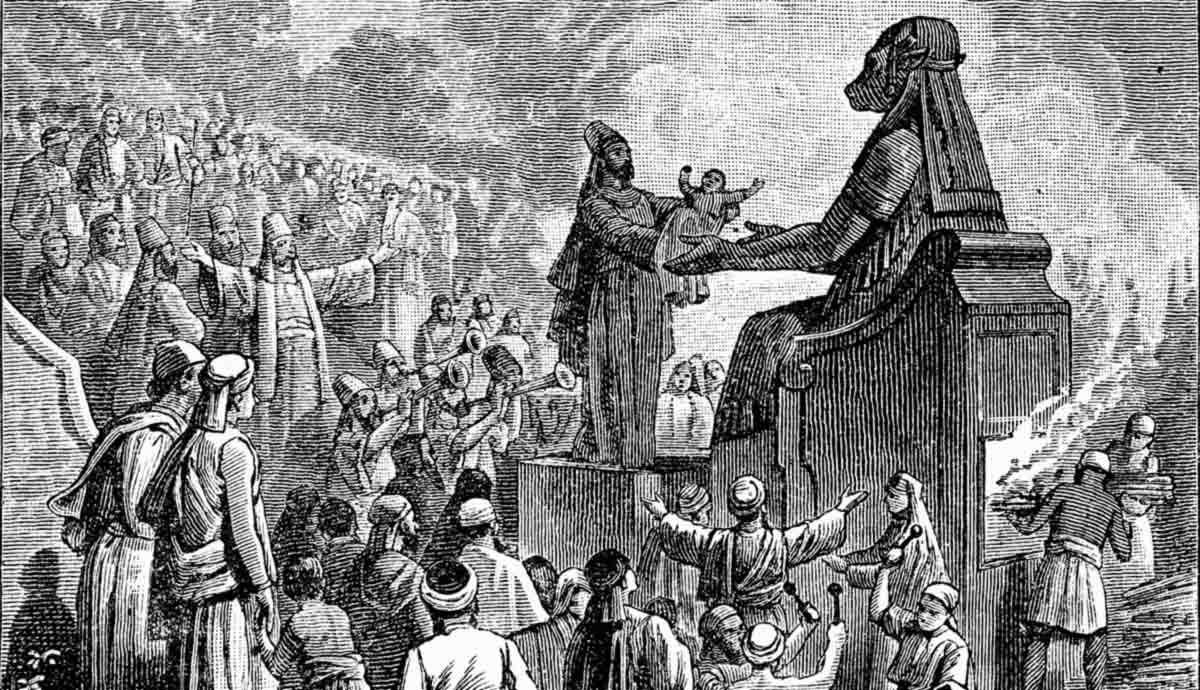
Solomon had the honor of building the Temple in Jerusalem, the city his father David established as the capital of Israel. The construction of this place of worship had a unifying effect, not just for national identity but also for religion. Royalty from across the known world came to meet with Solomon and see the magnificent house of God he constructed, and it bore witness to the riches of the Israelites.
After the death of Solomon, Israel split into two kingdoms, and Temple worship became a contentious issue, leading to idolatry and apostasy in the Northern Kingdom of Israel. With the loss of Solomon’s Temple several centuries later, the effect on worship was palpable. The exiles wished to restore the former glory of their native land, and the sense of identity and belonging that came with it.
Temple Worship in Unified Israel

According to the Bible, God did not allow David to build the Temple because of the amount of blood he spilled during his lifetime. He knew, however, that his son would construct it, and David did much of the preparation work for the construction that would happen after his death. He gathered materials, organized the priesthood, and brought the Tabernacle to Jerusalem.
Since the time the Israelites conquered the promised land, the Levites set up the Tabernacle in various places. First in Shiloh, then in Bethel, among other places. There was no permanent place that established Israelite worship. When David moved the Tabernacle to Jerusalem, it was in anticipation of establishing a new center of worship in Israel.
During the reigns of Saul and David, Israel had already experienced a greater sense of unity than existed while they were loosely affiliated tribes. The construction of a permanent, immovable, central place of worship in Jerusalem contributed to religious unity and stability. The Temple became the focal point of worship in Israel and solidified Jerusalem as the capital city in a religious sense in addition to the political.
The construction was a magnificent work of skill and artisanship. It displayed the riches and prosperity of the nation during the rule of Solomon with awe-inspiring works of art made from gold, silver, bronze, and precious stones. It featured veils and curtains artisans made of fine linen and embroidered with elaborate designs. Artists decorated the walls and pillars with carvings and engravings of cherubim, palm trees, flowers, and other symbolic imagery. They covered the walls with cedar wood, which they overlaid with gold. Gold covered the interior walls, floors, doors, and furnishings (1 Kings 6:20-22).

The Temple instilled a sense of favor and blessing in the worshippers who made the pilgrimage to attend the three main Jewish feasts. The Bible claims they believed the Temple was the house of God because the glory of the Lord filled the Temple in the form of a cloud (1 Kings 8:10-11). 2 Chronicles 7:1-3 details how fire from heaven consumed the sacrifice and offerings in the Temple. It was a sign that God had approved and accepted the Temple the Israelites dedicated to him. The Temple exemplified how God kept his promise to provide for his people.
We are told that subsequent visitors to the Temple of Solomon held that God resided in his Temple. They had a sense of his presence when they came close to the Temple, instilling a feeling that God was with them as a nation.
The Temple of Solomon During the Divided Kingdoms

Peace and prosperity did not last long after the death of Solomon. Jeroboam rebelled against Rehoboam, the son and successor of Solomon. The once unified Israel was divided into the Southern Kingdom of Judah, consisting of the tribes of Judah and Benjamin, and the Northern Kingdom of Israel, the ten remaining tribes of Israel.
Jeroboam did not want his citizens to travel to Jerusalem to worship because the city was in the territory of Judah. Jeroboam set up alternative centers of worship in Bethel and Dan. In addition, he built altars in various high places dedicated to idol worship. He instructed artisans to make golden calves reminiscent of the gods of neighboring nations. The primary purpose of these centers of worship was to establish a system of worship in direct opposition to worship at the Temple in Jerusalem.

The Temple that served as a symbol of unity before became the reason for separation in religious practice and worship. The motivating factor was political and met with fierce opposition from the prophets of Israel and Judah.
During ancient times, nations would consider the gods of a victorious nation superior to that of the losing side. In a sense, war pitted the gods of the warring nations against each other. Later, when the Northern Kingdom of Israel went to war against the Southern Kingdom of Judah, it exemplified their opposition to the God that they used to worship at the Temple in Jerusalem.
The Temple, which used to be a symbol of unity for all Israelites, became a symbol of the power behind the opposing forces of the Kingdom of Judah in the eyes of the Northern Kingdom of Israel.
The Loss of the Temple of Solomon

It was not only the Northern Kingdom of Israel that fell into idolatry. The Kingdom of Judah was guilty of the same when wicked kings ruled. Eventually, the Kingdom of Judah fell to the armies of Babylon, who destroyed Jerusalem and the Temple in 586 BCE.
This destruction was a devastating blow to the tribes of Judah and Benjamin. They were aware of the fate of the ten tribes of the Northern Kingdom. Their center of worship and their capital lay in ruins. The two symbols of their national and religious identity no longer existed, and they were in danger of losing their identity. The Babylonians engaged in systematic attempts to strip their prisoners of any semblance of association with their prior culture. They would assign their slaves new names that recognized Babylonian gods and re-educate them in the customs and traditions of Babylon.
The impact of worship at the Temple of Solomon is evident in the longing of the Babylonian exiles for their city, Jerusalem, and the Temple that graced it. At the end of seventy years of exile, they desired to restore Jerusalem and the Temple to their former glory.
The Medes and Persians who conquered the Babylonians during the exile had a different approach to their treatment of the Jews. They allowed them to return and rebuild what they had lost to the Babylonians. The rebuilding efforts were attempts to recover some of the former glory they knew as a nation, but neither the city nor the Temple ever attained what it used to be.

Though they built a Second Temple, the inauguration supposedly had no visible manifestations that the glory of God was present there. The Second Temple was also not nearly as opulent in size and adornment as the First Temple was. It nevertheless served as a central place of worship for the returned exiles who longed for the sense of unity and identity the First Temple offered. Some say that the value of something is only appreciated once it is lost. This rings true when considering the Temple of Solomon.
Conclusion

The Temple of Solomon played a significant role in establishing a sense of unity and identity in the unified kingdom of Israel. It was a testament to the faithfulness of God, his blessing, and his relationship with his people.
It provided a permanent place of worship where Israelites could gather for the three annual feasts that required a pilgrimage to Jerusalem and it helped establish Jerusalem as the political and religious capital of Israel.
When the Kingdom of Israel split into two, the Temple was in the territory of the Kingdom of Judah. The Kingdom of Israel set up alternative worship centers in direct opposition to the Temple of Solomon. The symbol of unity became a symbol of opposing force from the perspective of the Northern Kingdom. They fell into idolatry, and the Assyrians sent them into exile.
When the Kingdom of Judah also went into exile, the longing for the city of Jerusalem and the Temple evidenced its value as a symbol of identity and unity. As soon as possible, the exiles returned and attempted to regain some of their former glory by rebuilding the city and the Temple. They never gained the same sense of unity and identity. They also never again experienced the presence of God in the Temple itself.











